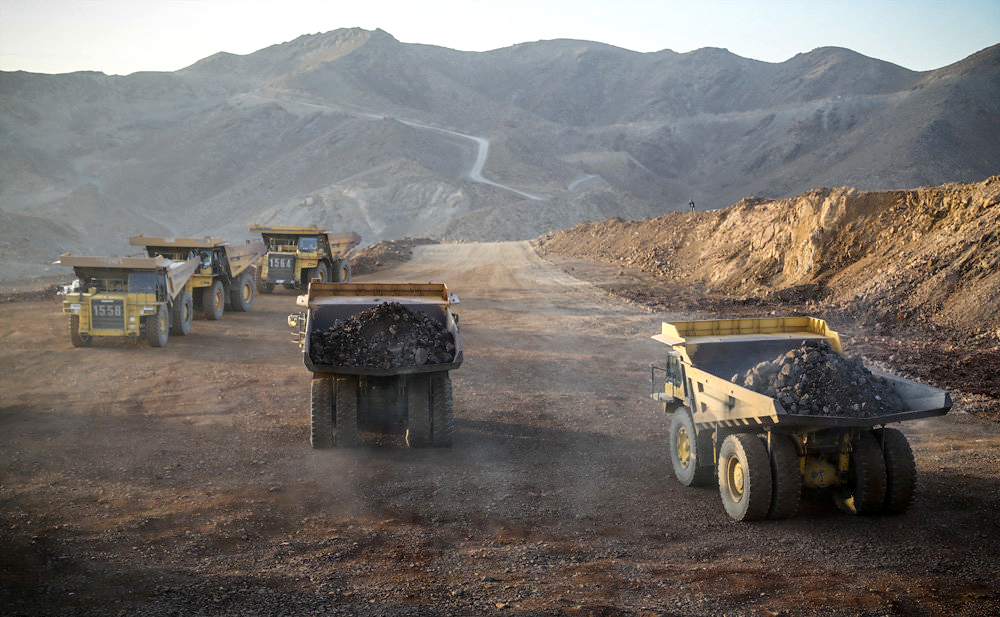Iran possesses one of the most untapped yet most important mineral resources of the world.
The country is home to 7% of global mineral reserves, encompassing some 68 minerals and more than 37 billion tons of proven reserves and 57 billion tons of potential reserves.
According to the US Geological Survey, Iran holds the world’s largest zinc reserves as well as the ninth largest copper, 12th largest iron ore and 10th largest uranium reserves.
When UN sanctions in Iran were lifted in January 2016, so was the chokehold on foreign investment. Iran’s mining sector became officially open for business.
Since then, the Iranian government has been keen to seek foreign investment and the technology it needs to fully exploit extensive mineral reserves that are currently only mined by mostly state-owned companies, reads an article published by Mining-technology.com. Excerpts follow:
High Potential
“There are a lot of reasons to be positive about Iran’s mining sector,” says Sabrin Chowdhury, commodities analyst at BMI Research. “It used to be that banks couldn’t undertake international transactions and actually lend investment capital to those who want to expand their presence in Iran. They can actually do all those things now, so that is something to be positive about.”
Chowdhury says the local potential is enormous in Iran as it has a large, skilled population with a huge demand for infrastructure and a domestic market for metals.
The Iranian Mines and Mining Industries Development and Renovation Organization said in May that, based on the roadmap drawn up for 2025, Iran’s steel demand will rise to 40 million tons.
A report published by BMI Research in September predicted that Iran’s mining sector will face short-term challenges but will see a steady acceleration in growth of around 5-6% over the coming years.
The report also shows that Iran’s copper production will continue to rise, averaging an annual growth of 13% during 2016-20, compared to 2.1% during the past five years. Copper production could reach 508 kilo tons by 2020 despite a monopoly held by state-owned mining company NICICO.
“Right now, the country is still recovering from the after-effects of the sanctions; their infrastructure is so outdated, mining technology is so outdated,” Chowdhury says.
To lure foreign investment, Iran’s government is offering a number of incentives. These include a tax-free window and exemptions to new mining investments.
“Up to 20 years from inception, mining companies get exempted from 80-100% of all of taxes. The government also vows not to claim any ownership rights on the land they are using so companies won’t have to pay mining royalties or extraction rights in those land areas,” explains Chowdhury.
The government is also offering free insurance coverage during exploration and free access to energy and water.
Under Iran’s Foreign Investment and Protection Act, which came into force in 2002, there are no restrictions on the percentage of foreign shareholding and ownership of mining companies. Mining companies are also allowed to fully repatriate their principal capital dividend and profits overseas.
Investments So Far
Since sanctions were lifted, the government has authorized $2 billion worth of direct foreign investment for 29 industrial and mining projects.
In May 2016, India said it will invest up to $500 million to develop the strategic Chabahar Port in the south of Iran. At the time, President Hassan Rouhani said Iran’s energy resources and Indian mines can pave the way for cooperation in aluminum, steel and petrochemical industries.
China and Iran have signed the biggest pact of all, agreeing to increase bilateral trade to $600 billion over the next decade while Korean steelmaker POSCO has signed an agreement to build a $1.6 billion steel mill in Iran.
The Risks
Poor infrastructure, bureaucracy, corruption and a complex legal system are some of the challenges companies can expect to face when going into Iran.
The Transparency Initiative ranks Iran 130 out of 168 countries globally.
However, high corruption risk has definitely not stopped both US and European companies investing in hotspots such as Nigeria and Angola.
“US companies do invest overseas where corruption is high, as they have a provision for these things. I am sure they can work around it. It’s not that big an issue, except it raises costs for them,” says Chowdhury.
She points out that mining companies are not expected to partner with state-owned firms for concessions, a situation that can usually be a red flag for masked corruption.
Currently, however, Iran’s mining sector is dominated by state-owned mining firms that can be both a problem and a positive for foreign firms.
State-owned NICICO operates the country’s three major copper mines of Sarcheshmeh, Sungun and Miduk that have combined estimated reserves of 3.4 billion tons of ore containing an average of 0.6% copper.
Sarcheshmeh copper mine, located in Kerman Province, is the world’s second largest, holding over 826 million tons of proven and 1.2 billion tons of estimated copper reserves with 0.7% average grade alongside substantial amounts of other minerals, including molybdenum, gold, silver and rare metals.
“[A dominance by state-owned firms] is a positive and a negative,” says Chowdhury. “If you are a foreign investor you would probably have better technology and equipment than these state-owned companies that are built with bureaucracy and outdated equipment. However, you can see it as a huge negative factor as an investor because these state-owned players are very established and have preferential access to credit and contacts in the government sectors, so can more easily get government contracts.”


